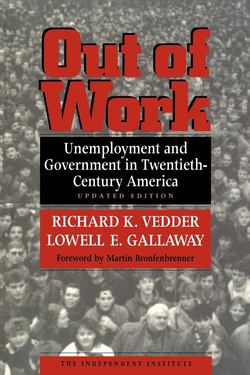Читать книгу Out of Work - Richard K Vedder - Страница 13
На сайте Литреса книга снята с продажи.
Spatial Variations in Unemployment
ОглавлениеIn addition to substantial intertemporal variations in unemployment, interstate differentials in joblessness have been great throughout the period. Before 1960, good state unemployment data were not collected on an annual basis, although information was gathered as part of several of the decennial population censuses.7 In table 1.2, indicators of interstate variation in unemployment are presented for a number of years.
TABLE 1.2 INTERSTATE VARIATIONS IN UNEMPLOYMENT, VARIOUS YEARS, 1930–88a
Note that throughout the period for which data are available, there are areas of the United States where the incidence of unemployment is three to four times that of other areas. Typically in recent years, there are states in which the unemployment rate is 10 percent or more, and other states where the rate is about 3 percent.
Do unemployment differentials between states tend to persist over time? The evidence suggests that in the very long run, there is no correlation between unemployment rates for different time periods. States that in one time period had high unemployment rates did not have a clear tendency to have relatively high rates in the later period. For example, the correlation between the unemployment rates for the forty-eight contiguous states and the District of Columbia in 1930 and 1988 is actually negative (-.13). Yet the “very long run” is actually quite long—perhaps forty or fifty years. There are relatively long periods in twentieth-century American history where unemployment variations have seemed to persist in something of a pattern. For example, the correlation between unemployment in 1961 and in 1988 for the forty-eight contiguous states and the District of Columbia is a fairly high. 47. Between 1930 and 1950 it was even greater, .62.
Some states seem to have persistently high or low rates of unemployment. For example, for twelve of the thirteen years examined from 1930 through 1988, the unemployment rate in West Virginia exceeded or equaled the national average. By contrast, in every single year the unemployment rate in Nebraska and South Dakota was less than the national average. Thus it is clearly possible that there are some regional variations in the normal or natural rate of unemployment.
